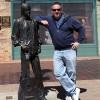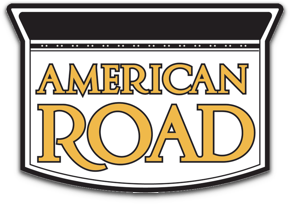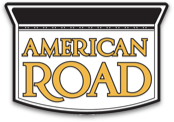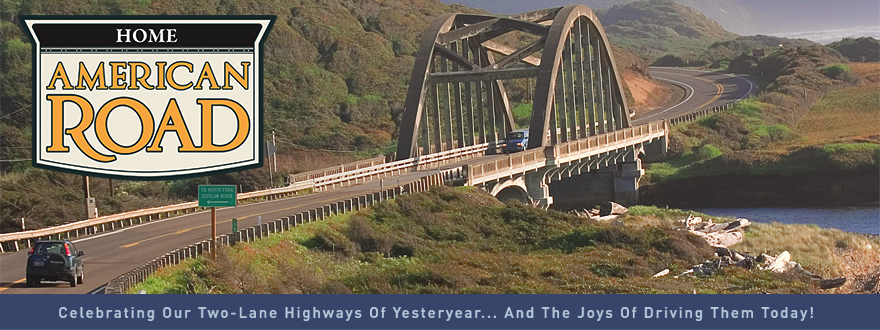-
Posts
447 -
Joined
-
Last visited
-
Days Won
16
Content Type
Profiles
Forums
Gallery
Blogs
Calendar
Everything posted by roadhound
-
While traveling through Southern Oregon recently we stopped in Ashland. While my wife and daughter checked out the shops my son and I went for a short hike through Lithia Park. For those unfamiliar with Ashland it is known for two things; it's Shakespeare Theater that runs through most of the summer and Lithia Park which starts and its downtown and follows Ashland Creek into the surrounding hillside. The park was designed by the same architect that designed San Francisco's Golden Gate Park, John McLaren. While hiking through we stumbled across this cabin which had a sign in the window proclaiming the following: Lithia Park Auto Camp 1915-1959 The Finest on the Pacific Highway 1915 The 92-acre auto camp in Lithia Park opened in Jun offering free overnight camping in a small clearing along Ashland Creek. The city provided community "kitchenettes" and bathrooms. It is one of the first municipally operated camp ground in the country. 1922 City imposed a 50-cent nightly fee. 1924 Community house was completed. 1926 The last segment of the Pacific Highway was completed in Siskiyou County, California, connecting the entire Pacific Coast with Canada and Mexico. In response, the renamed Lithia Auto Park built its first small cabins and a market. 1930 20 more tourist cabins were built, including this one. 1959 Competition with motels springing up along Highway 99 along with public concerns over the cleanliness and safety of the facilities forced the closure of the camp. 1964 Almost all of the buildings were removed before the property was transferred to the Parks & Rec Department. The Community House was later transformed into a natural history museum. A small zoo was nearby. 1983 The Ashland Parks and Recreation Department moved its office the Community House. The building was later renovated. 2001 The last remaining cabin was restored to document the typical tourist accomodation in Lithia Park, once the "finest campground on the Pacific Highway."
-
SF, One day for sure at Nut Tree, maybe two. I want to hang around until night starts to creep in to get some night time shots if I can. You know the type I am talking about. Before you head out on the road pick yourself up a copy of the Delorme "Northern California Atlas & Gazetter" at your local Borders Books. I never hit the road without it. I can confirm that the original Bridgeport Canyon Road is shown on that map. Another thought I had for you while you were in Paradise was a trip to Lassen. I went through their last week and it was absolutely spectacular. A sunrise shot taken at Lake Helen looking at Mt. Lassen might work out for you. Shot below taken on the road (literally) near Lake Almanor on California Hwy 36. When I get the chance I should thank the photographer who gave me the idea. Notice that I left the bug splatter on the windshield to give it authenticity. Roadhound
-
Dave, The information you provided was most useful and I was able to drive the route from Dunsmuir to the rest stop near the California\Oregon border almost entirely Interstate free. We took the stage road out of Dunsmuir to Mount Shasta, stage road out of Mount Shasta, Old 99 to Yreka, and Old 99 out of Yreka. We also took a side trip to Coles Station but doubled back to the Interstate before going over the Siskiyous and into Ashland. I would have like to have done the 99 pigtail loop but my daughter had had enough of the rough and winding roads by then. We did hit Jacksonville on the way out of Medford and drove the Old Stage Road out of Jacksonville before getting on the Interstate to Roseburg and then cutting over to Reedsport on the Coast. As it turns out my son has a friend who lives in Jacksonville so he showed us around a bit. Also, while in Ashland I discovered up a bit of road history regarding the Pacific Highway and Lithia Park that I will share once I complete my downloads and process my photos. Our route home was down 101 along the Oregon Coast and then the Redwood Highway back to the San Francisco Bay Area. We stopped in Humboldt Redwoods for a few hours and they had an outstanding newsreel presentation on the 1964 Christmas floods that hit the Eel River and the Klamath. I didn't realize that over 100 bridges were destroyed or damaged and more than a few towns where wiped off the map. The images of the devastation were remarkable. Roadhound
-
Sierra, Looking forward to seeing you at the Mustang Gathering (P-51's not the Ford variety) at the Nut Tree in a couple of weeks. Question for the US 40 experts: Was the Nut Tree in Vacaville California a known stop on US 40 or did it come after the interstate? I'm relatively sure that the "Milk Farm" whose remains lie 20 miles or so to the east was around when US 40 was still in existance. I would suggest any sunrise shots that you wish to take near Yosemite be done on the east side of the park. You might get lucky around Tioga pass but I am partial to Mono Lake when it comes to sunrises but that could be a bit far for a one day trip. Keep the Show on the Road had some information on the old routes into the park on the west side that he may be willing to share again if you are interested and ask him nicely. Keep The Show on the Road also has shared some 1920's era maps with the route around Conway Summit near Mono Lake that I can show you on a present day map when I see you. The road is not to bad, weather permitting, and you should be able to handle it in your van without knocking around the drywall tools too much. See you soon! Roadhound
-
One of my favorite 2 lane sidetrips is the stretch of Old Altamont Road between Mountain House and Livermore that lies just east of Tracy in California. When I am in a hurry and traffic is flowing at speed I will stay on I-580 over the Altamont Pass but when I have a few extra minutes to spare, or traffic is backed up on the interstate, I sidetrip to this 2 lane stretch of asphalt that was once the Lincoln and later US 50. There are a couple of postings referencing this section of road in the US 50 forum.
-
Thanks Dave! I will be spending a few hours this evening studying the maps and making notations. I have recollections of traveling through Dunsmuir in the late 60's and seeing a whole lot of charcoal grey and orange Southern Pacific locomotives which for a 5 year old was really cool. I do want to see the old stage stop but I think I will pass on rolling the windows down and driving at 3 MPH. That's one sure way to get me onto the Interstate real quick. One thing that I will have to keep in mind is that the temps are likely to be in 100's and if I do get a chance to explore off of the roadway I'll make sure to keep an eye out for rattlers. Roadhound
-
I had originally asked the question to Keep the Show on the Road via Personal Message but with his blessing I am throwing the question out in the open for all to enjoy. Where I need some guidance is the stretch between Dunsmuir and Ashland. I am really interested in the locations of the large arched bridges that you had posted pictures of on a previous topic. I am also interested in any other points of interest in that area that you think are worth seeing given the following guidelines. - This is a family vacation and I tend to wear thin my families' patience with me by stopping every 10 minutes to take pictures, therefore, I will have a limited number of free passes to make stops. Since this will be day 3 of the trip it will have to be something interesting to all. - Any roads taken off of the Interstate have to show progress toward the end of day's destination. There is hell to pay for back tracking! Thanks in advance Keep! Roadhound
-
Ara, On your journey through Cody did you happen to pass through Greybull on US 16? At the airport just west of town used to be the home of Hawkins and Powers and their vast fleet of water bombers. Most of their equipment was auctioned off in 2006. I had the opportunity to meet the curator of the air museum there and to tour what was left of the H& P operation a few weeks before the auction in August of 2006. If you look at the Google Earth image of the Greybull Wyoming airport, dated 2003, you will get an idea of what was once there. I haven't been back since and have been wondering how the museum, and its curator Ralph Reiner and wife Lorraine, are doing. If you pass through that way stop by and say hello, very nice people. Roadhound
-
Well Dave, after looking at the route on Google Earth, and then pulling out a map where I had marked a trip through that area, I confirmed that I have driven the route between Bluff and Mexican Hat. It was 1989 and my wife an I were wandering the Southwest on our way to Colorado Springs for my brother's graduation from the Air Force Academy. We had spent the night in Moab and then headed south on 191 through Monticello to Bluff and then 163 through Mexican Hat, Monument Valley, and finally Kayenta before we turned eastward. Of course back then I had no idea that anything ever preceeded the numbered highway. If I had known then what I know now... Somewhere I have a whole bunch of Kodachromes of the area. The two things I remember most are the spectacular scenery and the spectacular sunsets. There was also a duststorm that we drove through on our way to Moab from Capital Reef that clogged an air sensor on the car I was driving at the time. We spent the rest of the trip with the car surging once or twice every 90 seconds until we got home which was about 1200 miles later. I like the idea of a journey through that area again if it can be worked out. Maybe you need a photographer for the book you are writing? -Roadhound
-
You've grabbed my interest Dave. I've only traveled through the Monument Valley area once, and it was 20 years ago, but I've read enough Edward Abbey to have a good idea what the terrain is like. It is not hard to imagine how inhospitable the land would be to an early model automobile or present day one for that matter.
-
And you've got the original unpaved route of the Lincoln Highway\Pony Express Trail from just North of Ely through the Utah Desert. Roadhound
-
The rail line that the road is following looks like "V.P.R.R." on the map. After spending a few minutes searching for a V.P.R.R. railroad I suddenly realized that that the "V" is actually a "U". According to Wikipedia "Ellis was founded in 1867 as a railroad stop along the Union Pacific Railroad."
-
I've seen quite a few "Historic Route 40" signs in California along the route in Fairfield, Vacaville, Davis, Sacramento, and Colfax.
-
The east side of the park is best at that time of the year as there are some caves you can hike through that that are not far from the parking area. Everything else is a hike up hill in the heat. Take plenty of water if you go.
-
There is really not much to see between Yosemite and the coast. Having spent a few years covering that area as part of a service territory I was responsible for I can say that the only attraction worth stopping for is the Castle Air Musuem which lies east of Hwy 99 near the town of Atwater. The Museum is located at the front gate of the former Castle Air Force Base. They have a good collection of post World War II aircraft. Once you are out of the Sierra Nevada's and into the Central Valley the temperatures will likely be in the high 90's to low 100's. The terrain is agriculture and you will likely not want to linger around at anything outdoors. My advice would be to take CA 140 west out of Yosemite, pass through Merced with a diversion on 99 north to Atwater if the Museum interests you, otherwise take 59 south to 152 and continue on 152 to the coast. Once you are on the coast there is plenty to do depending upon your interests. Monterey and Carmel are a short trip south on Hwy 1, Santa Cruz is to the north and there are plenty of beaches in between.
-
Keep, I am only planning on going up the FR Canyon as far as Keddie and then I have to turn around and high tail it home. The reason I am going up that way is to hopefully photograph a steam engine as it travels eastward from Oroville through the canyon. I've scoped out spots along the route and have the waypoints set on my GPS. Of particular interest to me are the spots where the roadway and railroad bridges cross over each other. Hopefully the weather will cooperate and I'll get some nice pics that include both road and rail. The steam train that I am following is the Union Pacific 844. It is the last steam engine that was never retired and still on an active roster. I caught it about 10 days ago going over the Altamont and thought that the Feather River would make a great backdrop for this mighty machine. It will be challenging as I am sure that I am not the only one who has the idea of following UP 844 along the Feather River Route plus it can move when they pour on the steam.
-
Keep, I am really enjoying these treasures you are finding along US 99. That first shot with the light tower, contrails, and satellite dish is superb. Nice composition. If my plans come together I will be traveling part of 99E between Sacramento and Orovlle and then CA 70 (US 40 alt) through Oroville and up the Feather River Canyon on Saturday. Roadhound
-

Lincoln\us 50 Under The California Aquaduct
roadhound replied to roadhound's topic in Lincoln Highway / U.S. 30 / U.S. 50
Suey, Catching the commuter express would make for an interesting picture but I was more interested in catching one of the freight trains going over the trestle or maybe something like this... -

Lincoln\us 50 Under The California Aquaduct
roadhound replied to roadhound's topic in Lincoln Highway / U.S. 30 / U.S. 50
Wow, what a great find Keep! The San Jouquin River Bridge is most likely at what is now Mossdale Crossing. The completion of that bridge was the last link in the Transcontinental Railroad. Driving through Banta and Tracy you can imagine the scene as it is described in that article. The flooded land still does occur, though not on an annual basis anymore. Interesting to note that even today the railbeds are raised significantly above the surrounding land. I'm not sure where Ellis is but the location of Midway is still there as is Altamont. Livermore and Pleasanton are both cities with populations in the 75,000 range. I'm sure that if you dug up an article on early auto travel through that area you would read that it was a trying ordeal. I've read articles about early travel through the Pleasanton and Livermore area and during the winter months the roads were typically impassable. The soil in the Livermore valley turns to a very sticky goop when saturated which is great for growing wheat but not that good for driving an automobile across. An oldie but goodie for those new to our program: Summit Garage, Altamont, CA -

Lincoln\us 50 Under The California Aquaduct
roadhound replied to roadhound's topic in Lincoln Highway / U.S. 30 / U.S. 50
Not skeptical, just to lazy to figure it out myself. I think its a great way to explain a subject and has many advantages over a long typed-out sentence. I could easily imagine you in the front of a lecture hall with your overhead projector pointing out the landmarks on the map and explaining their significance. Sioux - any idea what times the trains run through the Altamont? I would like to get out there one afternoon and catch a locomotive going over the trestle but can't really spare an entire afternoon to sit and wait. In regards to railroads and highways, and I apologize if I have said this before, but I believe they are closely tied together at least as far as the western half of the country is concerned. In the time between the driving of the golden spike and the coming of the automobile the railroad was the best way to get from point A to point B. The railroads were built to the power restrictions of the locomotives of the day and would follow the path of least resistance across the landscape. As manpower was replaced with machine power obstacles were carved away and the railroad lines were straightened to allow for higher speeds and in the west the abandoned railbeds became ready made roadways for that new fangled contraption called the automobile. PPOO and the Victory in Nevada are good examples of where some of the former CPRR railbeds became roads. It also made sense that the new roads would follow the rail lines between towns and the coming of the automobile. Many towns in the west were established to support the railroad and the automobile may have kept some dying towns alive long after they were needed by the railroad. Many of these towns would survive up until the coming of the Interstate which then diverted traffic away from them and in time killing off the hotels, restaurants and other amenities needed by the auto traveler. (see: Wells, Nevada) One other connection between railroads and roads in the West. It was a Senator from Illinois that was a huge proponent of a railroad that connected the eastern half of the country with the west. He new then that effecient travel from one coast to another was important for a strong country. Unfortunately as President his attention was diverted by a little internal squabble and he didn't live to see his idea come to fruition. However, 50 years later the first transcontinental highway was named in his honor. Roadhound -

Lincoln\us 50 Under The California Aquaduct
roadhound replied to roadhound's topic in Lincoln Highway / U.S. 30 / U.S. 50
Dave, you never cease to amaze me. That is the first time I have ever seen a post on a message board done that way. I, however, will stick to the keyboard. Just to clarify. The 1869 version of the Western Pacific is not the same as the 1983 company that became part of the Union Pacific RR. The original WP was created to complete the transcontinental railroad from Sacramento to San Francisco and was later absorbed by the Central Pacific RR. The CPRR later became part of the Southern Pacific RR, which has since become part of the Union Pacific RR. The Western Pacific RR that was merged into the Union Pacific was founded in 1903. Abandoned railbed ownership - Western Pacific (original), Central Pacific RR, Southern Pacific, Union Pacific In-use railbed ownership - WP (founded 1903), Union Pacific Roadhound



